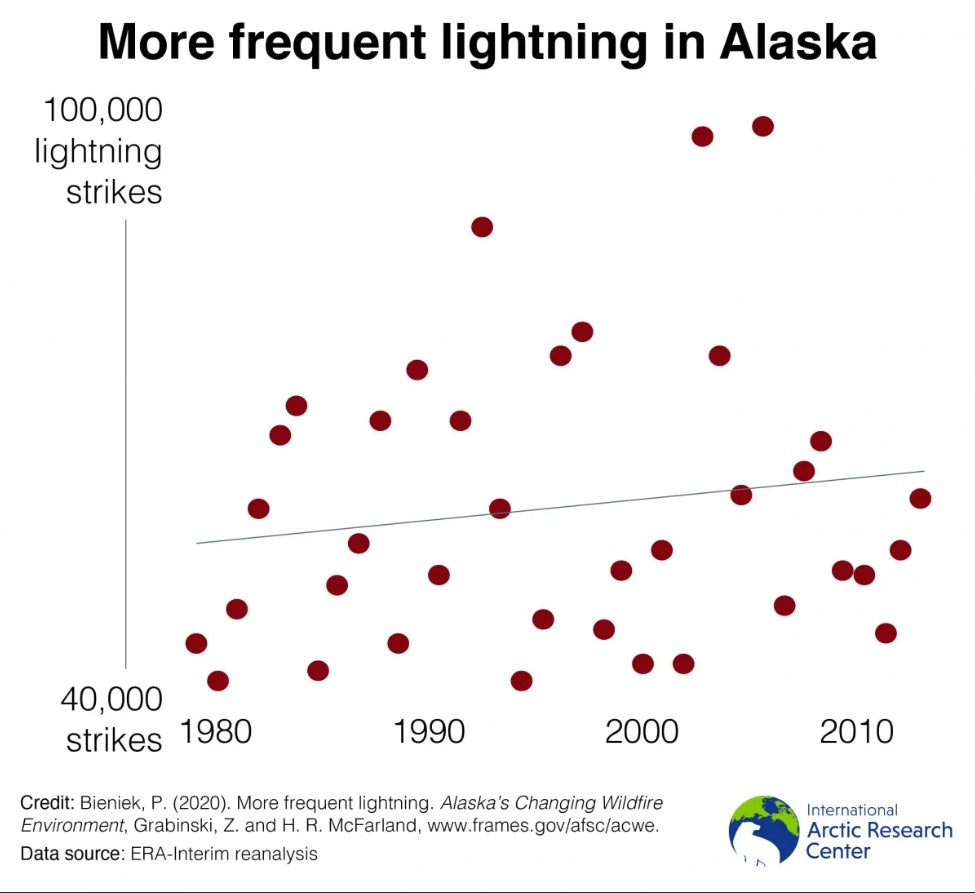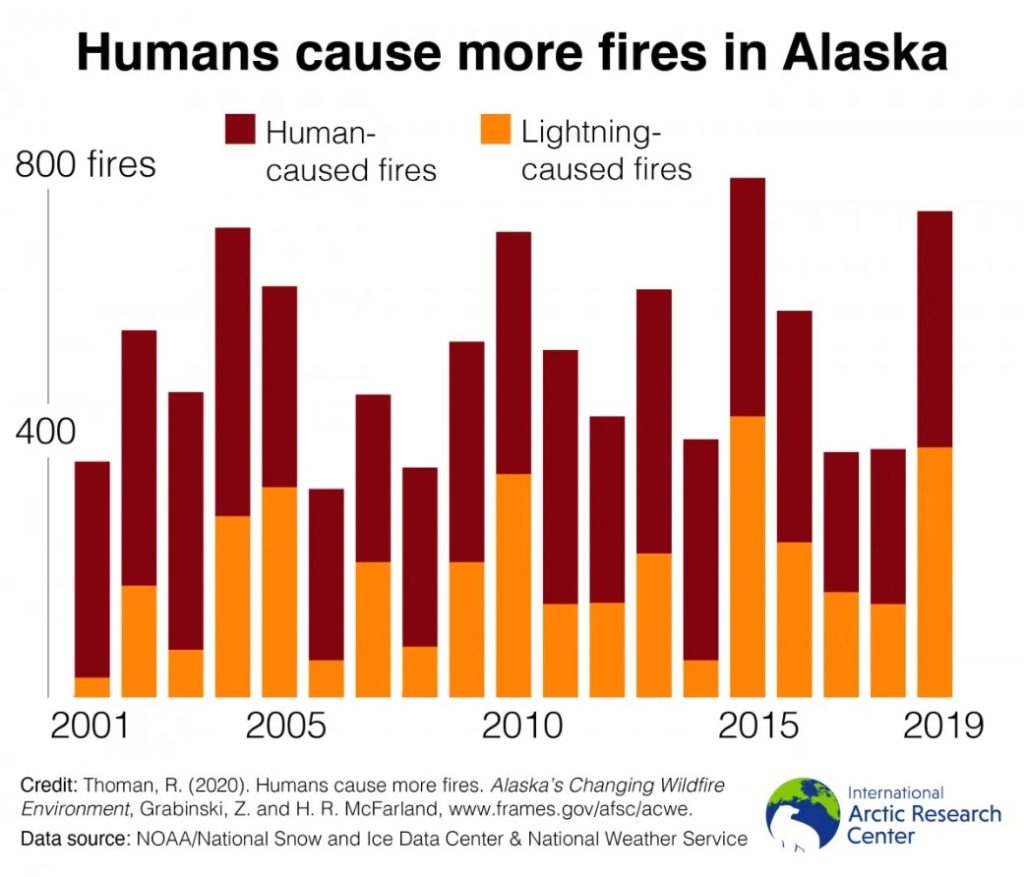An article by The Associated Press (AP) titled Wildfires in Anchorage? Climate change sparks disaster fears suggests disaster due to climate change induced drought is just ahead this coming summer. The article is badly misleading because it ignores several other contributing factors and historical data.
The article says:
Research on a flat spot for air evacuations. Talk of old-style civil defense sirens to warn of fast-moving wildfires. Hundreds of urban firefighters training in wildland firefighting techniques while snow still blankets the ground.
This is the new reality in Alaska’s largest city, where a recent series of wildfires near Anchorage and the hottest day on record have sparked fears that a warming climate could soon mean serious, untenable blazes in urban areas — just like in the rest of the drought-plagued American West.
Wildfire training early in the year is prudent but certainly no indicator of climate change. The citation made in the article to reference a warming climate from another AP story also does nothing to illustrate climate change in Alaska.
To be clear, large wildfires have been common throughout Alaska’s history. The third largest wildfire since consistent data has been recorded occurred in the late 1950s and the fifth largest in the late 1960s, during decades when the Earth was cooling.
Among the factors contributing to present wildfire trends that the AP article misses are the makeup of the data on wildfires, as well as the cause for the perceived climate change. When these factors are carefully examined it becomes clear that the present wildfire trends have more to do with landscape change than climate change.
First, as the wildfire data seen in Figure 1 below from the International Arctic Research Center (IARC) clearly shows, the majority of Alaskan fires is caused by humans and lightning – neither of which are climate driven metrics.
In fact, the increase in human population alone explains the increase in wildfires far better than climate change. According to U.S Census Bureau data, Alaska’s population increased from 135,000 in 1950 to more than 733,000 in 2022. Anchorage has experienced an even steeper population increase than the state as a whole, going from 11,254 in 1950 to 289,810 in 2022 – a 25 fold increase since 1950.
The IARC reports:
Human-caused wildfires tend to occur closer to communities, are suppressed quickly, and occur earlier in the year than fires ignited by lightning. In many years, the total number of fires caused by humans is greater, and require more resources to fight than the number of fires started by lightning.
Also, as Anchorage has grown, its subdivisions and associated urban development has spread into previously forested areas surrounding the city. As such, it stands to reason that with a 25 times greater population in Anchorage, and humans starting more wildfires, more wildfires in need of quick suppression would be the result. Climate change has nothing to do with it.
The other major cause of Alaskan wildfire, lightning, also shows a sharp increase according to data, seen in Figure 2 below:
“In most years, and all years with a substantial fire season, the majority of acres burned are caused by lightning ignitions,” the IARC notes. “These fires are often in remote locations where managers often allow fires to burn, in order to serve their ecological role without directly impacting human life or property.”
The increase in lightning can also be explained by increased human presence, from the paper, “Lightning hazards to human societies in a changing climate” we learn that human populations produce more cloud condensation nuclei, and therefore increase the number of lightning-creating thunderstorms, especially in urban environments like Anchorage:
Westcott (1995) reported an increase of 40%–85% in downwind lightning flash densities during summer around 16 central US cities for the period 1989–1992. She attributed the result to several factors, such as increased urban cloud condensation nuclei (CCN) concentrations and also urban population and size, which interact in complex ways. The increase was most notable during afternoon hours, when convective thunderstorms are most likely to develop in the unstable atmosphere. The results indicate that larger cities had higher annual values of PM10 concentrations and exhibited larger lightning increases (with some exceptions).
The AP asserts increased drought in Alaska is contributing to wildfires, but the data on precipitation presented in Figure 3 below, refutes this claim. Interior Alaska has experienced 40 percent more precipitation during the period over which the AP reports wildfires have the increased. This increase in precipitation has also contributed to a greening in Alaska, which means more fuel for wildfires when they start.
Each of these factors have contributed to the recent increased in wildfires, none of which are due to climate change. the AP simply ignored such easily verified facts, in order to promote the narrative that climate change is responsible for yet another type of bad outcome.
It is sad commentary on the state of journalism at the world’s most widespread news outlet when its reporters, editors, and fact checkers, can’t take a few minutes to do basic research and seek out the real reasons behind Alaska’s wildfire increase. As it is, the AP’s story is a disservice to its readers.
















